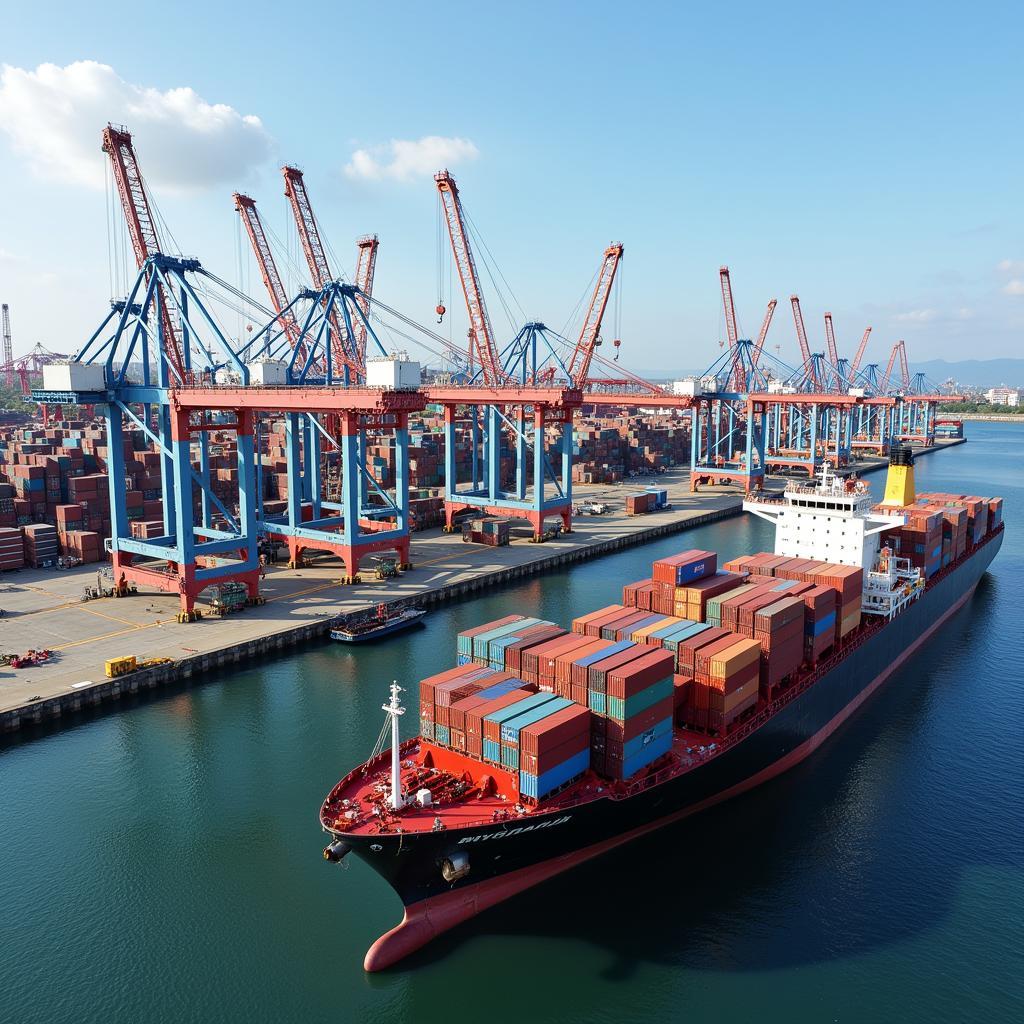The ASEAN conference program, a cornerstone of Southeast Asian cooperation, offers a dynamic platform for dialogue, collaboration, and progress on key regional and global issues. These high-level gatherings bring together leaders, policymakers, business executives, academics, and civil society representatives from across the 10 ASEAN member states and beyond.
Unveiling the Importance of ASEAN Conference Programs
ASEAN conferences play a pivotal role in advancing the region’s shared goals of economic integration, political security, and socio-cultural cooperation. They provide a structured framework for:
- Strengthening Regional Integration: Conferences facilitate negotiations and agreements on trade, investment, connectivity, and other key areas, fostering closer economic ties within ASEAN.
- Enhancing Political and Security Cooperation: Dialogue platforms address shared security challenges, such as transnational crime, terrorism, and maritime disputes, promoting stability and trust among member states.
- Promoting Socio-Cultural Understanding: Conferences foster cultural exchange, educational collaborations, and people-to-people connectivity, strengthening ASEAN’s identity and social fabric.
- Engaging with Dialogue Partners: ASEAN conferences provide a forum for engaging with external partners like the United States, China, Japan, and the European Union on issues of mutual interest.
Navigating the ASEAN Conference Landscape: A Glimpse Inside
The ASEAN conference program encompasses a diverse range of events, each tailored to specific themes and objectives. These range from:
- Summit Meetings: Held twice yearly, these gatherings of ASEAN leaders set the strategic direction for regional cooperation and address pressing regional and global challenges.
- Ministerial Meetings: Ministers from various sectors, including foreign affairs, trade, finance, and education, convene regularly to discuss policy coordination, implementation, and progress within their respective areas.
- Senior Officials’ Meetings: These preparatory meetings lay the groundwork for ministerial and summit-level discussions, ensuring efficient and productive high-level engagements.
- Sectoral Meetings and Working Groups: These specialized gatherings focus on specific areas of cooperation, addressing technical issues, developing action plans, and monitoring progress in areas such as trade, agriculture, energy, and tourism.
- Dialogue Partner Consultations: ASEAN engages regularly with its dialogue partners through dedicated summits, ministerial meetings, and working groups to advance shared interests and address common challenges.
Expert Insight:
“The ASEAN conference program is a testament to the region’s commitment to multilateralism and its ability to find common ground on complex issues. These gatherings are not merely talk shops; they produce tangible outcomes that benefit the lives of millions across Southeast Asia.” – Dr. Sitiveni Halapua, Former Secretary-General of the Pacific Islands Forum Secretariat.
Key Features of a Successful ASEAN Conference Program
Several factors contribute to the effectiveness of ASEAN conferences:
- Consensus-Based Decision Making: ASEAN operates on the principle of consensus, ensuring that decisions reflect the collective will of all member states.
- Informality and Flexibility: While structured, ASEAN meetings allow for informal discussions and flexibility, facilitating open dialogue and pragmatic solutions.
- Emphasis on Practical Cooperation: ASEAN conferences prioritize concrete deliverables and action-oriented outcomes, translating dialogue into tangible results.
- Inclusivity and Open Dialogue: Conferences encourage participation from all stakeholders, fostering a sense of ownership and shared responsibility.
ASEAN Conference Program in Action: Real-World Impact
The impact of ASEAN conferences extends far beyond meeting rooms. Here are a few examples:
- The ASEAN Economic Community (AEC): Established through a series of summits and ministerial meetings, the AEC aims to create a single market and production base, facilitating free flow of goods, services, investment, and skilled labor within the region.
- The ASEAN Regional Forum (ARF): This key platform for security dialogue, established through the ASEAN conference framework, brings together 27 countries to discuss and address regional security challenges.
- The ASEAN Socio-Cultural Community (ASCC): Forged through years of ministerial meetings and working group discussions, the ASCC promotes a people-centered approach to development, focusing on areas such as education, health, culture, and social welfare.
 ASEAN Conference Positive Impact
ASEAN Conference Positive Impact
Looking Ahead: The Future of ASEAN Conference Programs
As ASEAN navigates a rapidly changing global landscape, its conference program will remain crucial in:
- Addressing Emerging Challenges: Climate change, digital disruption, and evolving geopolitical dynamics require innovative solutions and coordinated regional responses.
- Deepening Economic Integration: ASEAN conferences will continue to drive progress on the AEC Blueprint, further liberalizing trade, facilitating investment, and promoting regional connectivity.
- Strengthening ASEAN Centrality: In an increasingly multipolar world, ASEAN conferences will remain vital for upholding ASEAN’s role as a driving force for peace, stability, and prosperity in the region.
Conclusion: ASEAN Conference Programs – A Catalyst for Regional Progress
The ASEAN conference program stands as a testament to the power of dialogue, cooperation, and shared vision. These events are not mere formalities but dynamic platforms that shape the region’s trajectory, address shared challenges, and unlock opportunities for a more integrated, prosperous, and peaceful Southeast Asia. As ASEAN continues to evolve, its conference program will remain an indispensable tool for realizing its collective aspirations and navigating the complexities of the 21st century.
Frequently Asked Questions about ASEAN Conference Programs:
1. What is the main purpose of ASEAN conferences?
ASEAN conferences serve as platforms for dialogue, cooperation, and decision-making among member states on a wide range of political, economic, and socio-cultural issues. They aim to advance regional integration, promote peace and stability, and enhance the well-being of people in Southeast Asia.
2. How often do ASEAN conferences take place?
The frequency of ASEAN conferences varies depending on the level and nature of the meeting. Summit meetings of ASEAN leaders are held twice a year, while ministerial meetings occur more frequently, typically once or twice annually for each sector. There are also numerous senior officials’ meetings, sectoral gatherings, and working group sessions held throughout the year.
3. Who participates in ASEAN conferences?
ASEAN conferences bring together a diverse range of participants, including:
- Heads of state and government from the 10 ASEAN member states
- Ministers from various sectors (e.g., foreign affairs, trade, finance, education)
- Senior government officials
- Representatives from ASEAN dialogue partners (e.g., China, Japan, the United States, the European Union)
- Observers from international organizations and civil society groups
4. Where are ASEAN conferences held?
ASEAN conferences are typically hosted by the member state holding the ASEAN Chairmanship, which rotates annually. The venue for each conference is determined by the host country.
5. How can I find information about upcoming ASEAN conferences?
Information about upcoming ASEAN conferences can be found on the official website of the ASEAN Secretariat (www.asean.org). Many individual ministries and ASEAN sectoral bodies also maintain websites with details on relevant meetings and events.
For further assistance or inquiries, please don’t hesitate to contact us:
Phone Number: 0369020373
Email: [email protected]
Address: Thon Ngoc Lien, Hiep Hoa, Bac Giang, Vietnam
Our dedicated customer support team is available 24/7 to assist you.
You might also be interested in:
We are committed to providing valuable resources and insights on ASEAN affairs.


